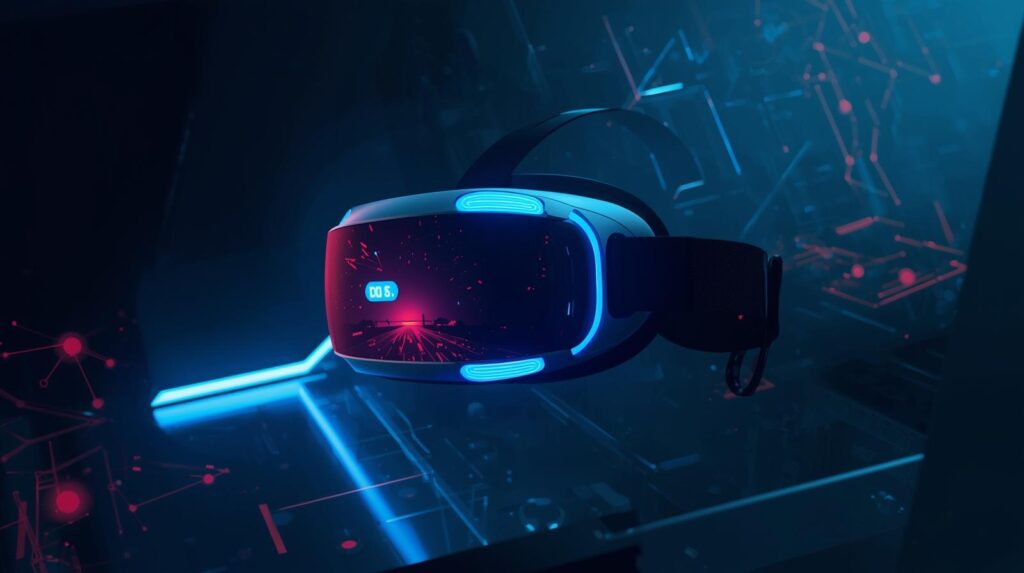Virtual reality (VR) is no longer a futuristic concept confined to the realms of science fiction. Today, VR stands as a transformative force within the gaming industry, redefining how players interact with digital environments and narratives. As gaming technology evolves, VR is set to revolutionize gaming experiences, offering immersive and engaging worlds that were previously unimaginable.
The Evolution of Gaming Systems
Gaming systems have undergone significant transformations over the decades, from the simplistic 2D graphics of early consoles to the ultra-realistic graphics of today’s high-end gaming PCs and consoles. The introduction of VR is the latest milestone in this evolutionary journey, promising a more immersive experience that bridges the gap between the virtual and real worlds.
A Leap in Gaming Software
At the heart of VR’s impact on gaming is the development of sophisticated gaming software capable of rendering complex virtual environments in real-time. Game developers are leveraging advanced algorithms and graphics engines to create lifelike worlds that respond dynamically to players’ actions. This level of interactivity is setting new standards for what players can expect from gaming experiences.
Enhancing Player Engagement
VR technology enhances player engagement by offering a 360-degree view of the game world, allowing players to interact with the environment in a more natural and intuitive way. With VR, players are no longer mere spectators; they become active participants in the game, exploring virtual landscapes, solving puzzles, and engaging in combat as if they were physically present in the game world.
Transformative Impact on Gaming Technology
The integration of VR into gaming systems is not without its challenges. High costs, technical limitations, and the need for powerful hardware are some of the hurdles that must be overcome. However, the potential benefits far outweigh these challenges, driving innovation and investment in VR technology.
Overcoming Technical Challenges
Developers face several technical challenges in creating seamless VR experiences. Ensuring smooth performance without lag, minimizing motion sickness, and optimizing graphics to run on VR hardware are critical considerations. These challenges push developers to innovate, leading to advancements in hardware and software that benefit the broader gaming industry.
VR as a Catalyst for Innovation
VR technology is a catalyst for innovation, inspiring developers to explore new gameplay mechanics and narrative structures. The ability to manipulate time and space within a virtual environment opens up endless possibilities for creative storytelling and gameplay experimentation. This innovation is not only transforming gaming experiences but also influencing other industries, such as education and healthcare, where VR is used for training and simulation purposes.
The Future of Gaming with VR

As VR technology continues to mature, its impact on the gaming industry is expected to grow. Future advancements in VR could lead to even more realistic and immersive experiences, blurring the lines between the virtual and physical worlds.
Expanding Accessibility and Affordability
One of the key factors that will drive the widespread adoption of VR is the reduction in cost and improvement in accessibility. As VR hardware becomes more affordable and user-friendly, a broader audience will have the opportunity to experience the unique benefits of VR gaming.
Integration with Other Technologies
The future of VR in gaming is closely linked to the integration of other emerging technologies, such as artificial intelligence (AI) and augmented reality (AR). AI can enhance VR experiences by creating more intelligent and responsive game environments, while AR can blend virtual elements with the real world, offering new ways to interact with games.
Implications for Business Strategy
For business strategists and innovation managers, the rise of VR in gaming presents both opportunities and challenges. Companies must consider how to integrate VR into their business models and product offerings to stay competitive. This may involve investing in VR development, forming strategic partnerships, or exploring new revenue streams through VR content.
Conclusion
Virtual reality is poised to transform the gaming industry, offering new levels of immersion and interactivity that redefine the gaming experience. As the technology continues to advance, it will drive innovation across gaming systems, software, and technology, creating new opportunities for players and developers alike. For industry leaders, understanding and embracing VR’s potential is essential to staying ahead in a rapidly evolving landscape.
In conclusion, while the journey of VR in gaming is still unfolding, its trajectory is clear: VR is set to become a cornerstone of gaming technology, reshaping how we play and experience games in profound ways. As VR becomes more integrated into the gaming ecosystem, it will not only enhance gaming experiences but also pave the way for new business strategies and technological advancements across various industries.




